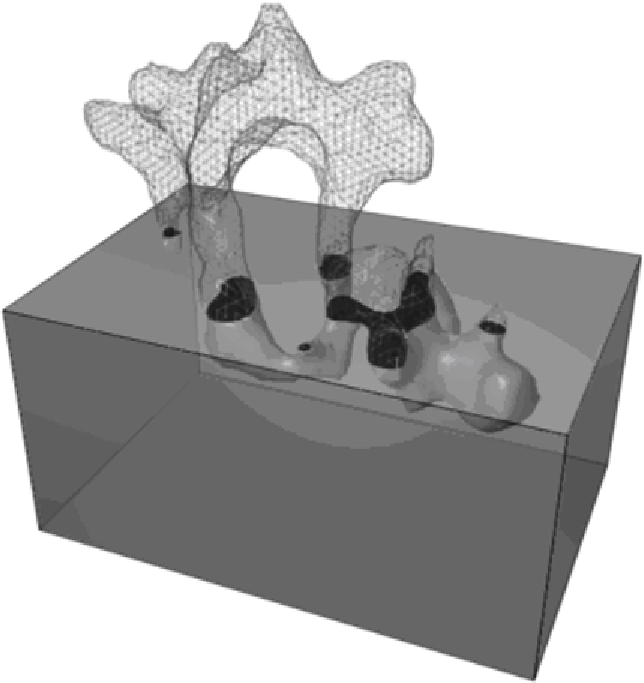Information Technology Reference
In-Depth Information
Figure 8. Pore reconstruction
analysis of the images taken from the surface of a
specimen and describing their changes using the
constitutive law of the solid continuous mechan-
ics. The image taken at the undeformed state is
called
master picture
and each of the following
images, describing a special deformed state, are
called
slave images
. As it is shown in Figure 9
the algorithm starts with identifying a number of
sub-windows on the master picture. Each of them
is representing an area of the specimen using a
characteristic matrix of grey-level pixels. The aim
is to follow the displacement and deformation of
these sub-windows in each of the slave picture.
At the end of the analysis the algorithm leads to
a series of time-changing displacements for each
sub-window
2
. According to the magnification of
the acquisition device the user may have general
information about the specimen or quite detailed
information at the meso- or micro-level (Anzelotti
2008; Nicoletto 2008; Nicoletto 2009; Nicoletto
in Press).
DIC is practically based on visual concepts. It
introduces the image processing algorithm to the
students, make them familiar with the explanation
of the displacements calculations and moreover it
is a good approach to activate the students inter-
ests in the topic of strain measurement. DIC is a
measuring method mostly used by the researchers
and as an upcoming and growing method has been
less used for educational purposes. However it is
potentially capable of being used in engineering
education as it easily provides the visual require-

Search WWH ::

Custom Search